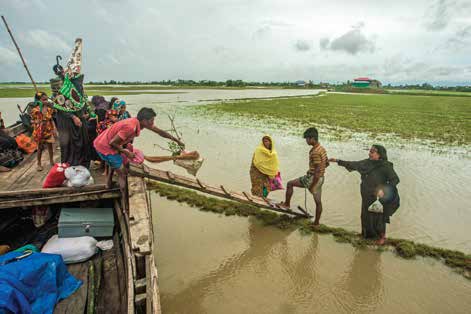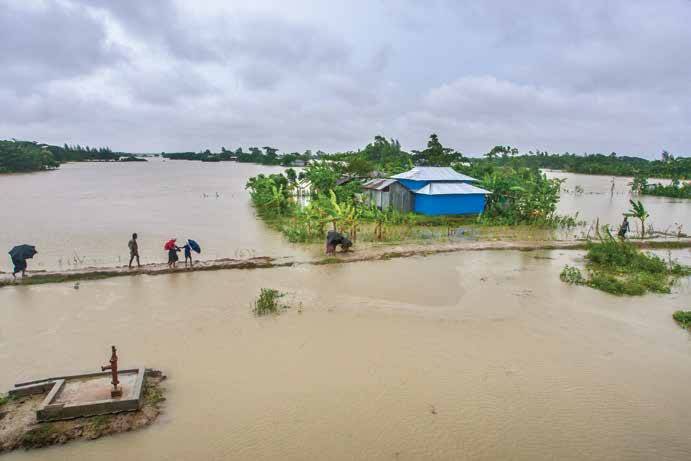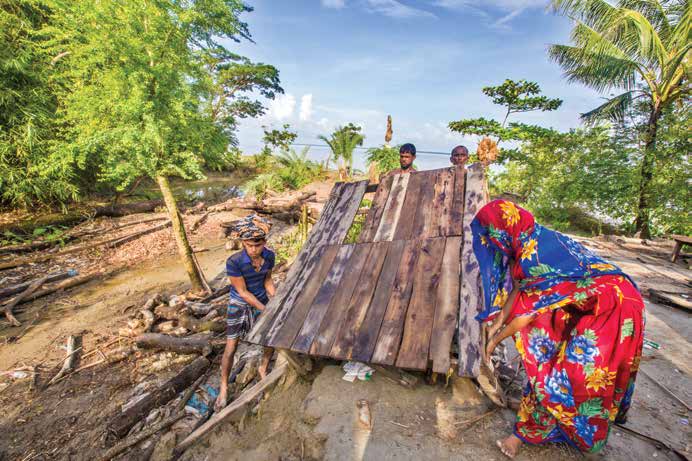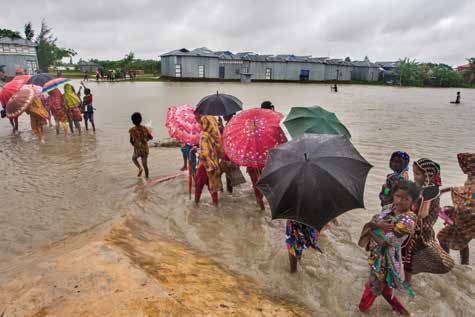With rising sea levels, warmer temperatures and increasingly extreme weather conditions, the world is moving toward a climate crisis. Climate change poses an existential threat to human civilisation and threatens to push millions of species to the brink of extinction. The rising sea level catalysed by climate change has displaced millions from their homes. However, the intensity of the climate displacement crisis across the globe pales in comparison to that in the face of modern-day Bangladesh.

According to the Internal Displacement Monitoring Centre, more than 700,000 Bangladeshis have been displaced on average by natural disasters. The number spiked during the years with catastrophic cyclones, like 2009’s Aila, which displaced millions of people and killed more than 200. But even in relatively calmer years, there is a rising drumbeat of displacement as the sea-level rises, and erosion, salinity intrusion, crop failures, and repeat inundation make life along the coast untenable.

Overall, the number of Bangladeshis displaced by the varied impacts of climate change could reach 13.3 million by 2050, making it the country’s number-one driver of internal migration, a World Bank report states.
As the rising water level continues to devour homes in Bangladesh’s coastal areas, people have been forced to find floating solutions. Year after year, devastating floods break through the mud embankments, washing away homes and crops. Thousands of families across the region desperately survive in makeshift houses on boats with limited supply of food and water. However, they are well aware of the inevitability. Lack of land to cultivate and water to drink will force them to leave their villages one day. Eventually, they will have to flee to Dhaka’s congested slums, living precariously on menial work.
Overall, the number of Bangladeshis displaced by the varied impacts of climate change could reach 13.3 million by 2050, making it the country’s number-one driver of internal migration, a World Bank report states.
With rising sea levels, warmer temperatures and increasingly extreme weather conditions, the world is moving toward a climate crisis. Climate change poses an existential threat to human civilisation and threatens to push millions of species to the brink of extinction. The rising sea level catalysed by climate change has displaced millions from their homes. However, the intensity of the climate displacement crisis across the globe pales in comparison to that in the face of modern-day Bangladesh.

According to the Internal Displacement Monitoring Centre, more than 700,000 Bangladeshis have been displaced on average by natural disasters. The number spiked during the years with catastrophic cyclones, like 2009’s Aila, which displaced millions of people and killed more than 200. But even in relatively calmer years, there is a rising drumbeat of displacement as the sea-level rises, and erosion, salinity intrusion, crop failures, and repeat inundation make life along the coast untenable.

Overall, the number of Bangladeshis displaced by the varied impacts of climate change could reach 13.3 million by 2050, making it the country’s number-one driver of internal migration, a World Bank report states.

As the rising water level continues to devour homes in Bangladesh’s coastal areas, people have been forced to find floating solutions. Year after year, devastating floods break through the mud embankments, washing away homes and crops. Thousands of families across the region desperately survive in makeshift houses on boats with limited supply of food and water. However, they are well aware of the inevitability. Lack of land to cultivate and water to drink will force them to leave their villages one day. Eventually, they will have to flee to Dhaka’s congested slums, living precariously on menial work.















